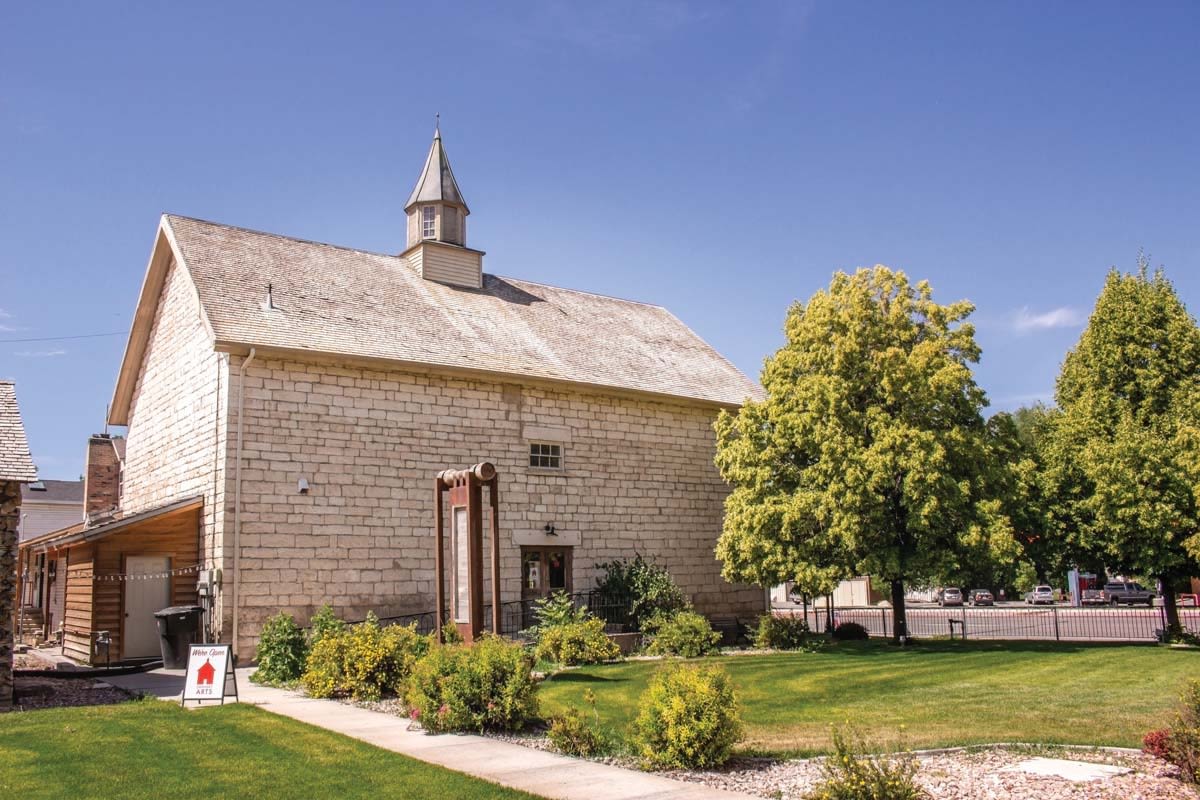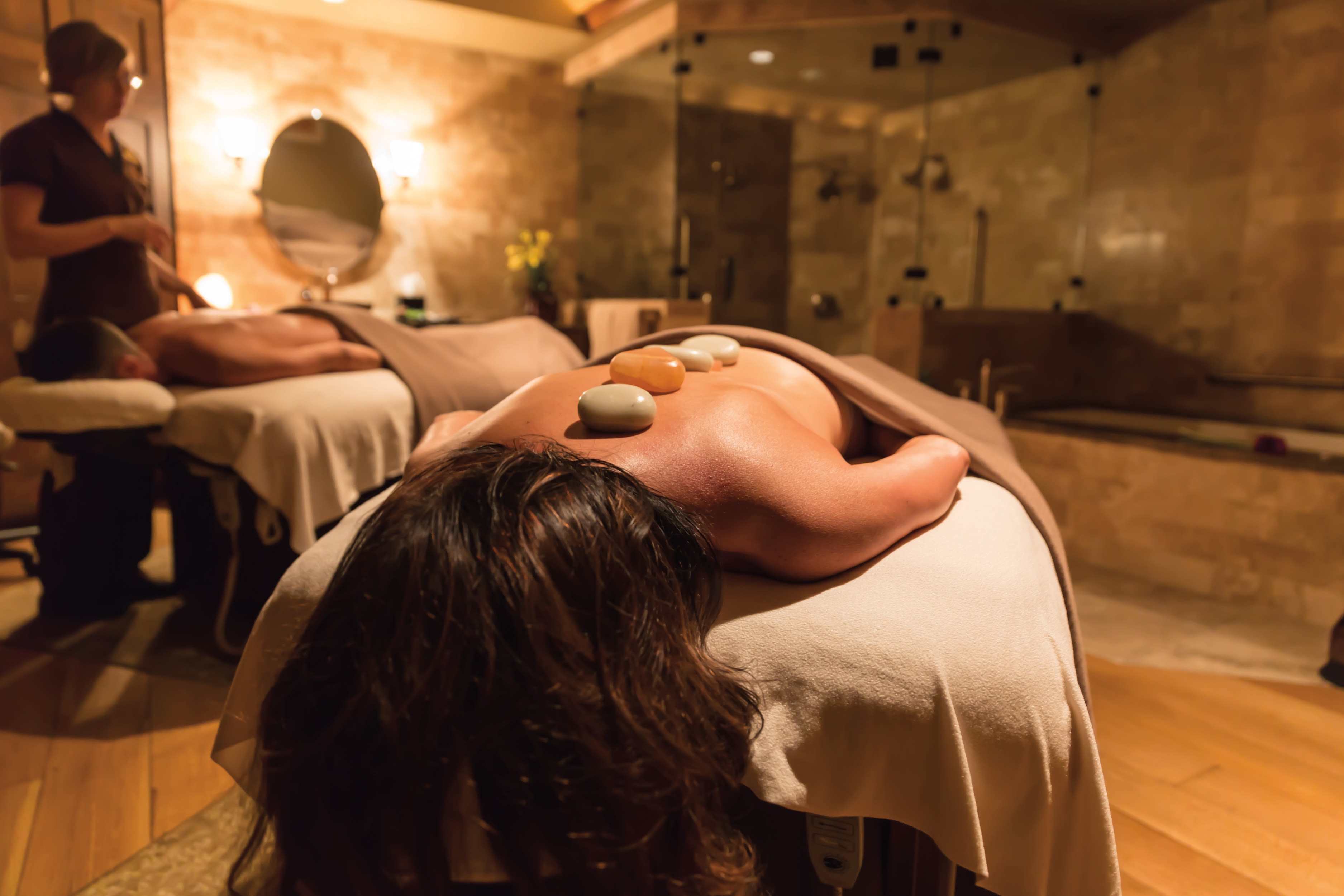48 Hours in The Grand Tetons
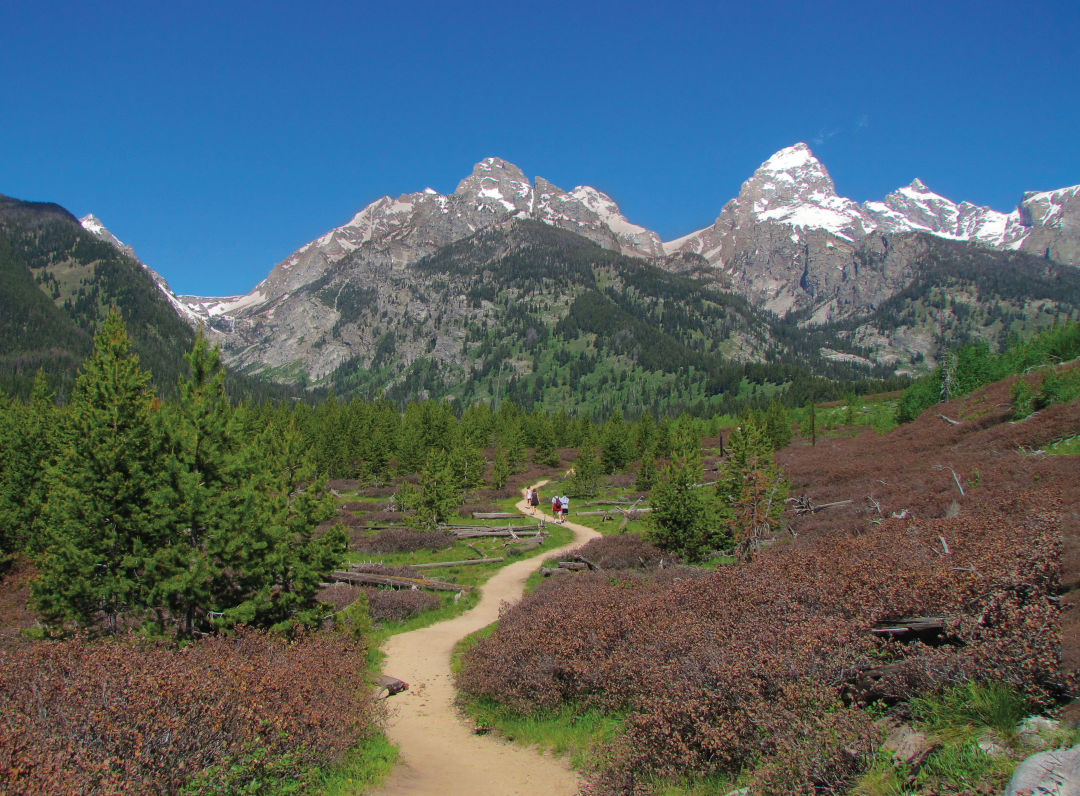
Just a few miles past the national park’s Moose entrance, the four-mile Taggart Lake Trail loops through undulating terrain and delivers spectacular views.
Image: Courtesy Shutterstock
Ed Note: Be sure to check with the National Parks Service, lodging entities, and restaurants prior to arriving to ensure that establishments are open during the evolving Covid-19 pandemic.
Around a bend in the trail, we came to a place where Cascade Canyon opened wide, revealing an extraordinary backcountry view of the majestic Grand Tetons—and a black bear with a pair of cubs. As hikers began to bear-jam on the boulders above the trail, the creatures went about their business, grazing, playing, and tumbling toward Cascade Creek, until they disappeared into the brush, and the trail traffic—the best kind of traffic—thinned.
A four-and-a-half-hour drive from Park City, Grand Teton National Park spans 310,000 acres, and the range’s highest peak reaches 13,775 feet. The view from the road is, frankly, spectacular, but ditching the car and crowds for a few hours is better. To get you started, here’s a walking tour through 48 hours of Wyoming grandeur.
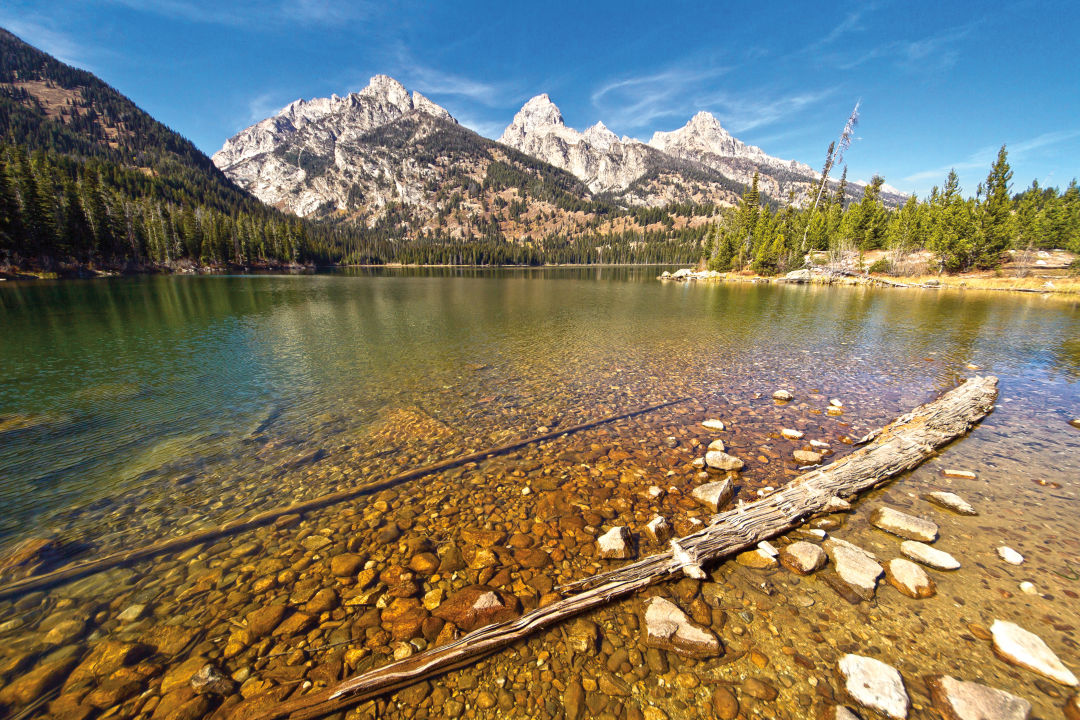
Taggart Lake
Image: Courtesy Shutterstock
Day One
Wheel out of Park City early in the a.m., heading north toward Jackson Hole, Wyoming, via I-80. The drive through rural Utah, Idaho, and Wyoming has scant cell service and plenty of cows, until you hit the almost-there stretch of road paralleling the Snake River, where you’ll catch glimpses of whitewater rafters and kayakers approaching the famed Big Kahuna and Lunch Counter rapids. (Keep an eye out for bald eagles, too.) Roll through the bustling, decidedly Western town of Jackson Hole and proceed to Taggart Lake Trailhead, 2.5 miles past the park’s Moose Entrance Station.
Throw the swim trunks in your day pack, along with the prerequisite bear spray, and follow this moderate, well-traveled, four-mile loop in a counterclockwise direction. You’ll pass a horse corral (and possibly a moose or two) as the trail works its way gradually uphill, crossing and hugging a bubbling stream, then passing alternately through undulating lupine- and Indian paintbrush–bedecked meadows, forested expanses, and rocky outcrops. The lake itself is about halfway through the hike, and plenty of large, flat rocks serve as good launching spots for a frigid dip in the clear, glacier-fed waters that reflect the dramatic peaks of Nez Perce and the Grand Teton. Dry off over a picnic, then cross the footbridge and continue the loop, taking in the expansive views as well as conifer-scented terrain on the return to the parking lot.
Post-adventure refuel:
Head into downtown Jackson for locally crafted beer (Pako’s IPA, perhaps)
paired with fish and chips or a Big Hole burger at Snake River Brewing
(265 S Millward St, Jackson, 307.739.2337).
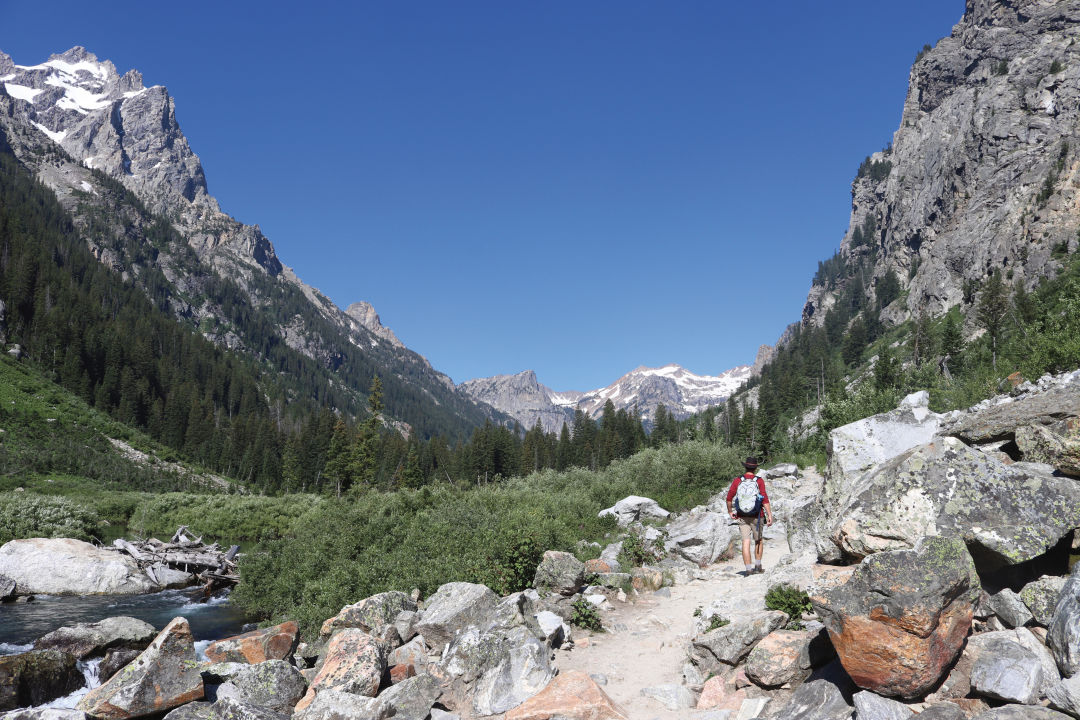
Cascade Canyon, Grand Teton National Park
Image: Courtesy Shutterstock
Day Two
Begin the day’s adventure with a 12-minute boat shuttle (jennylakeboating.com; $18 round trip or $10 one way, per adult) across Jenny Lake—or you can hoof it two miles around the lake’s perimeter. Once you arrive at the dock on the lake’s west shore, start your ascent to Cascade Canyon. Choose either the popular (i.e., heavily traveled) one-mile (one-way) Inspiration Point hike, or bypass the crowds and Hidden Falls via the decidedly quieter (but less view-laden) Horse Trail, located less than a quarter mile to the north of the dock.
As you enter the canyon, jaw-dropping views and opportunities to encounter wildlife—such as moose or black bear—steadily increase as the number of hikers decreases. Hike as long as your legs, water supply, and daylight allow before backtracking to the dock in time to catch the last boat. The Forks of Cascade Canyon is roughly a 9-mile out-and-back trip from the dock; if you bear right, Solitude Lake is 2.7 miles farther (one way); and for the extra sprightly hiker, continuing farther and looping to a series of lakes and canyons is possible.
Of note: If you stop to picnic along the Inspiration Point Trail, keep an eye out for bold squirrels, who might steal your snacks, and please—for your sake and theirs—don’t feed them.
Post-adventure refuel: Head to Jackson Lake Lodge for the evening. Iconic and historic (note the images of dignitaries on its walls), this lodge serves as a civilized stop with huge views. If it’s chilly, huddle inside, sip cocktails in the Blue Heron Lounge, and peer at the stunning landscape through the 60-foot-tall expanses of glass. Or venture out back with the binocs to scan the rich habitat surrounding the lodge. On-site eats range from ’50s diner–style nibbles to swanky locally sourced eats at The Mural Room (reservations recommended).
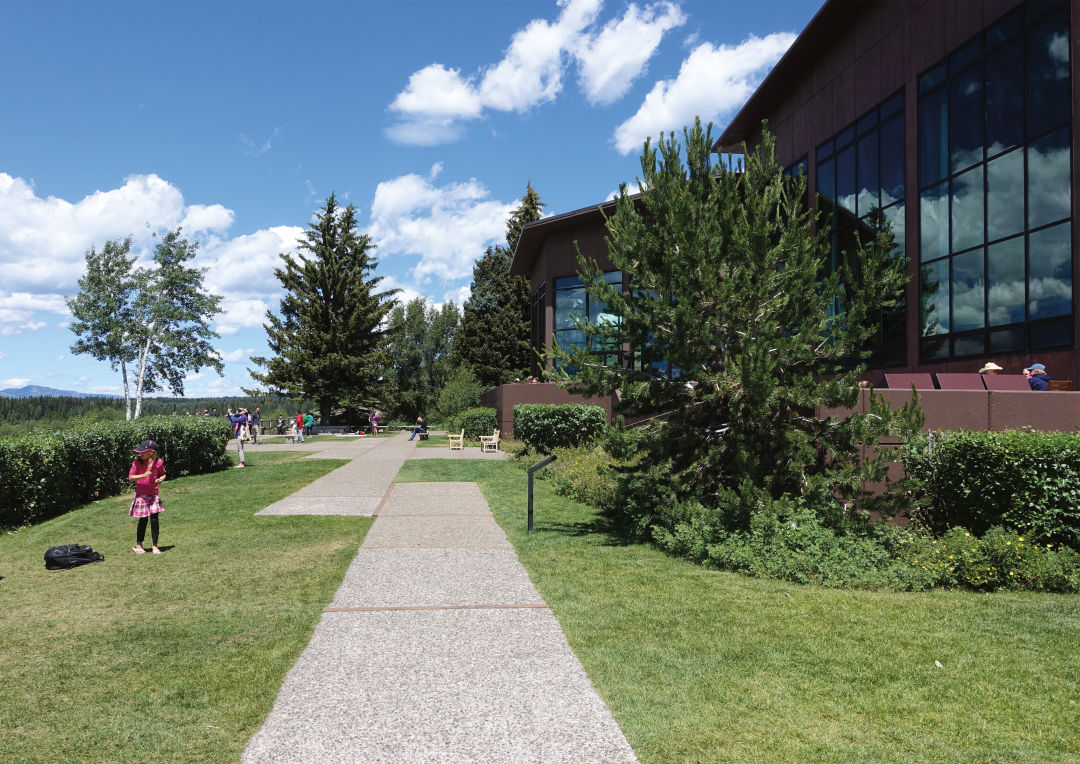
Jackson Lake Lodge
Of Note: The lodge is not expected to open for the summer 2020 season, given the evolving Covid-19 situation.
Where to Stay
Lodging and camping are plentiful in and around Jackson (jacksonholechamber.com), which serves as the gateway to Grand Teton National Park. Just north of Jackson Hole in Teton Village, the eco-minded and chic Hotel Terra (3335 West Village Dr, 307.201.6065), serves as a gentrified basecamp with posh accoutrements (don’t miss laps in the rooftop infinity pool). Its Western-infused, rustic-luxe neighbor, Teton Mountain Lodge & Spa (3385 Cody Lane, 307.201.6066), is also amenity-rich and, like Hotel Terra, conveniently located just a stone’s throw from the park entrance.
If you prefer to get a bit deeper into the park, Jackson Lake Lodge (101 Jackson Lake Lodge Rd, Moran, 307.543.3100) is an impeccable combination of old-school historic lodge (Rockefeller’s 1950s hotel is now on the National Register of Historic Places) and location, location, location. If you choose to camp, make sure your gear is suitable in terms of warmth (it gets downright freezing at night), and keep all bear-attracting goodies (toiletries, water bottles, and food) out of the tent. To nab a site on the first evening in town, Gros Ventre is a good bet. It rarely reaches capacity, as it has 350 spacious, first-come, first-served sites covering a swath of wildlife habitat strewn with cottonwoods and sagebrush.
A full list of in-the-park campsites is available at nps.gov/grte.
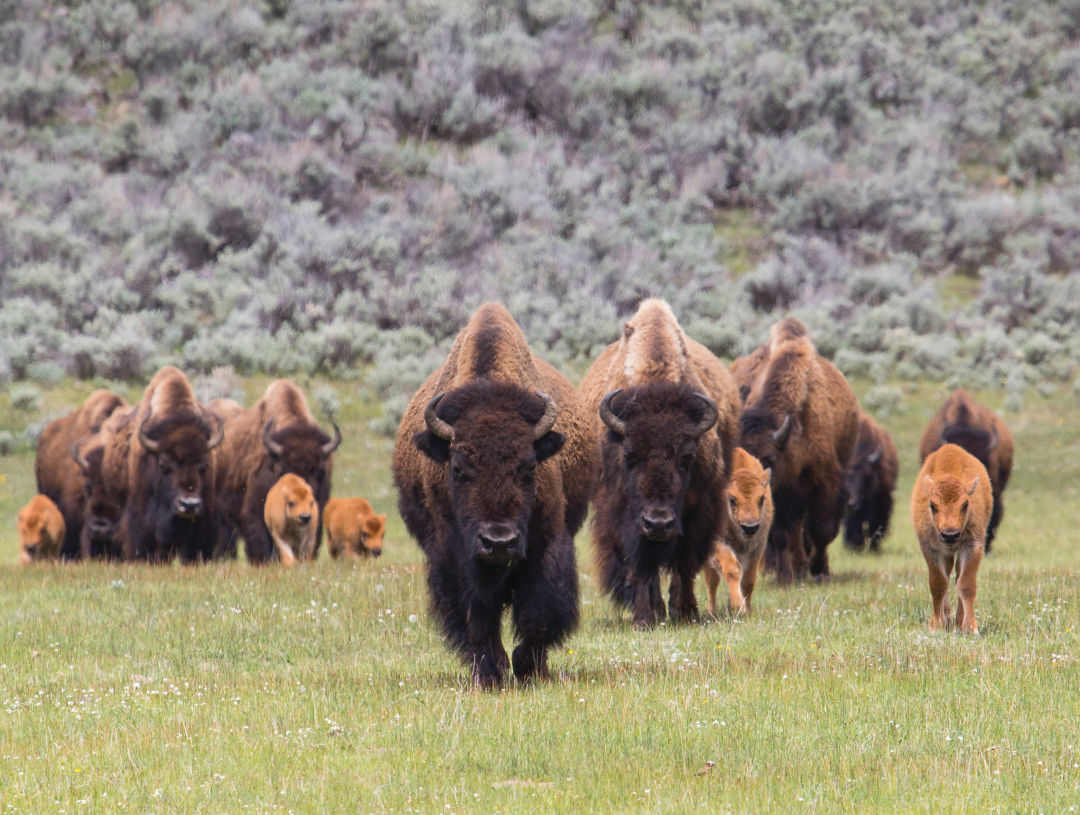
Bison at Yellowstone National Park
Image: Neal Hebert/Courtesy NPS
Extend the Adventure
Not ready to return to the grind (or the grid) just yet? Take some extra time to explore the 2,221,766-acre wild country up north, Yellowstone National Park. Of note: Yellowstone lodging gets booked up months in advance. Before you commit, call the folks at Xanterra (307.344.7901) to see if a reservation has opened up for the night, preferably at the historic Lake Yellowstone Hotel—or a campground if you have gear in tow. Then, hit the road for the wildlife-rich geological phenomenon.
For a brief visit through the park, slowly cruise the figure-eight loop, starting as early in the morning as you can to see the most wildlife and pausing for the occasional leg-stretch on boardwalk-covered loops. Geological features, such as Old Faithful, can get a little city-like in terms of crowds, so head off to less-trammeled terrain, pausing to scan the horizon for wolves, coyotes, bison, and bears in the expansive Lamar Valley and Hayden Valley, and don’t miss a stop at the Grand Canyon of Yellowstone.
If you have time to hit the trail, check with the rangers at the nearest visitor center to gauge bear activity in the area before setting forth—and always hike with bear spray, and make noise. Bubbling pots and sulphur-spewing fumaroles deserve respect, too, so stick to the trails or boardwalks, and keep children close. A few (of many) hikes worth a wander: Mount Washburn, Storm Point Loop, Wapiti to Clear Lake (and beyond), and Mystic Falls. Remember to get back to basecamp before nightfall, as driving in the dark can be a bit treacherous.
Day-tripper must-haves
- Bear spray
- Binoculars
- Layers
- Sunblock
- Water and snacks



















